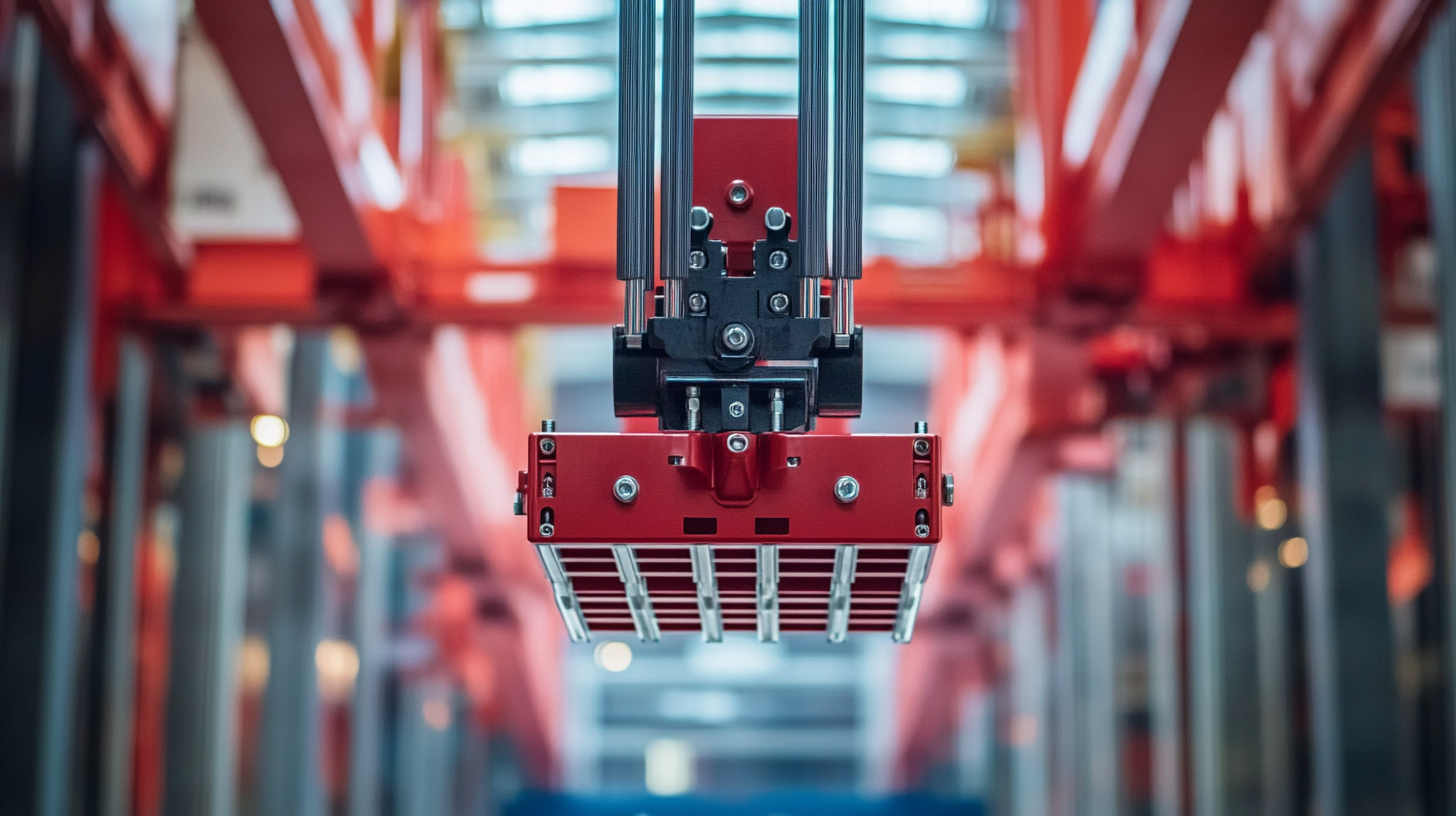 sales@loadcellsensor.com
sales@loadcellsensor.com

Global Sourcing Revolution: How China's Best Thin Load Cells Set the Standard for Quality and Reliability
In the realm of modern manufacturing and industrial applications, the demand for precision and reliability has never been more critical. At the forefront of this evolution are thin load cells, which have become essential components in a wide range of processes, from automotive production to aerospace engineering. China has emerged as a leader in producing these thin load cells, setting a global standard for quality and performance.

This blog explores the benefits of leveraging China’s advanced manufacturing techniques, exceptional materials, and innovative designs to enhance operational efficiency. By examining the nuances of thin load cell technology and the advantages offered by Chinese manufacturers, we will uncover how businesses can harness these advancements to improve product accuracy, minimize material costs, and ultimately drive success in a competitive marketplace.
Join us as we delve into the global sourcing revolution that is reshaping the landscape of load cell applications.
The Importance of Quality Standards in Global Sourcing for Load Cells
Quality standards play a crucial role in global sourcing, especially in the load cell industry, where precision is paramount. According to a report from MarketsandMarkets, the global load cell market is expected to reach USD 4.20 billion by 2027, growing at a CAGR of 5.5%. This growth underscores the need for consistently high-quality products, as end-users increasingly demand reliability in applications ranging from industrial weighing to medical devices. Without stringent quality standards, the risk of product failures and inaccuracies can have significant repercussions across industries.
China has emerged as a leader in supplying thin load cells, setting the benchmark for quality and reliability. The introduction of ISO 9001 quality management systems in Chinese manufacturing practices ensures that products not only meet but often exceed international quality standards. A report by Research and Markets highlights that 45% of load cells sold globally are sourced from China, indicating trust in their manufacturing capabilities. By adhering to global standards and leveraging advanced technology, Chinese manufacturers are reshaping the landscape of load cell sourcing, ensuring that buyers receive not just products, but a commitment to excellence.
Identifying Reliable Suppliers: Key Traits to Look For in China's Market
In the rapidly evolving landscape of global sourcing, identifying reliable suppliers in China's robust manufacturing sector is paramount for businesses aiming to maintain high standards of quality and reliability, especially in the production of thin load cells. According to a recent report by MarketsandMarkets, the global load cell market is projected to grow from $3.9 billion in 2021 to $5.6 billion by 2026, highlighting the increasing demand for high-quality sensor technologies. To successfully navigate this market, businesses must focus on key traits that signify reliability among suppliers.

One of the foremost traits to look for is a supplier's adherence to international quality standards such as ISO 9001. Suppliers with these certifications demonstrate their commitment to consistent quality production processes. Additionally, it is essential to evaluate a supplier’s technological capabilities. According to a study conducted by Mordor Intelligence, technological advancement is a critical factor in the competitiveness of Chinese manufacturers in the load cell market. Suppliers leveraging cutting-edge technology not only enhance their product reliability but also increase overall efficiency. Furthermore, strong customer service and responsive communication channels can serve as indicators of a supplier's reliability, ensuring that businesses can address concerns swiftly and maintain a steady supply chain.
Evaluating Performance: Testing and Certifications for Load Cell Quality
In the realm of industrial applications, the significance of load cells cannot be overstated. These devices are essential for measuring weight and force, making them integral to various sectors, including manufacturing, logistics, and transportation. As global sourcing continues to evolve, China's thin load cells have emerged as exemplary models of quality and reliability. To maintain these high standards, rigorous testing and certification processes play a critical role in evaluating performance.
Testing protocols for load cells often encompass numerous metrics, including accuracy, stability, and temperature sensitivity. Manufacturers in China have adopted stringent measures to ensure that their products meet both domestic and international standards. Certifications like ISO 9001 and OIML provide additional assurance to consumers regarding the quality of these load cells. This commitment to excellence not only elevates the standard within the industry but also positions Chinese manufacturers as leaders in providing dependable solutions for weight measurement and control across the globe. Through comprehensive evaluations, companies can confidently rely on these load cells to meet their operational needs, ultimately enhancing productivity and efficiency.
Global Sourcing Revolution: How China's Best Thin Load Cells Set the Standard for Quality and Reliability
| Load Cell Model | Max Capacity (kg) | Output Sensitivity (mV/V) | Temperature Range (°C) | Accuracy (%) | Certification |
|---|---|---|---|---|---|
| Model A | 500 | 2.0 | -10 to 60 | ±0.02 | ISO 9001 |
| Model B | 1000 | 1.5 | -20 to 70 | ±0.03 | CE, RoHS |
| Model C | 2000 | 2.5 | -10 to 50 | ±0.01 | UL, ISO 9001 |
| Model D | 3000 | 1.8 | -30 to 85 | ±0.02 | TÜV |
| Model E | 1500 | 2.2 | -20 to 60 | ±0.05 | ISO 14001 |
Building Long-term Relationships: Navigating Supplier Communication and Trust
Effective supplier communication is vital for fostering long-term relationships in the global sourcing landscape. According to a report by McKinsey, companies that prioritize strong supplier relationships can achieve up to a 30% improvement in overall performance metrics, including quality and delivery times. These relationships hinge on trust, which is essential when sourcing critical components like thin load cells from China, known for their quality and reliability. A transparent communication channel allows for real-time problem-solving and feedback, leading to enhanced collaboration and innovation.

Building trust requires companies to engage in open dialogues about expectations, capabilities, and potential challenges. A survey conducted by Deloitte found that 86% of executives believe that building trust with suppliers significantly enhances their competitiveness. When sourcing advanced technologies, such as thin load cells, it is crucial to maintain consistent communication regarding performance standards and technological advancements. Such proactive engagement not only mitigates risks but also fosters an environment of mutual respect, thereby paving the way for sustained success in the supply chain.
Cost vs. Quality: Balancing Economic Decisions in Sourcing Thin Load Cells
When it comes to sourcing thin load cells, the age-old debate of cost versus quality often takes center stage. Manufacturers are faced with the challenge of balancing the need for economic efficiency against the imperative of product reliability. While cheaper options may initially appear attractive, the long-term costs associated with poor performance and frequent replacements can erode savings, leading to compromised operational efficiency and customer dissatisfaction.
China has emerged as a leader in the production of high-quality thin load cells, setting a benchmark in the industry. Chinese manufacturers have invested heavily in technology and quality assurance processes, resulting in products that not only meet international standards but often exceed them. This commitment to quality provides companies with a compelling case for prioritizing reliability over the initial costs, reinforcing the idea that an upfront investment in superior products can yield greater returns in terms of durability and performance.
Ultimately, the decision to source thin load cells should reflect a nuanced understanding of both immediate and long-term needs. By considering the total cost of ownership and recognizing the value of reliability, businesses can make informed sourcing choices that align with their operational goals while positioning themselves competitively in the marketplace.
Global Sourcing Revolution: Thin Load Cells Quality vs. Cost Analysis
This chart illustrates the quality rating and cost of thin load cells in the global sourcing landscape, highlighting the balance between economic decisions in sourcing and maintaining high standards of quality and reliability.

